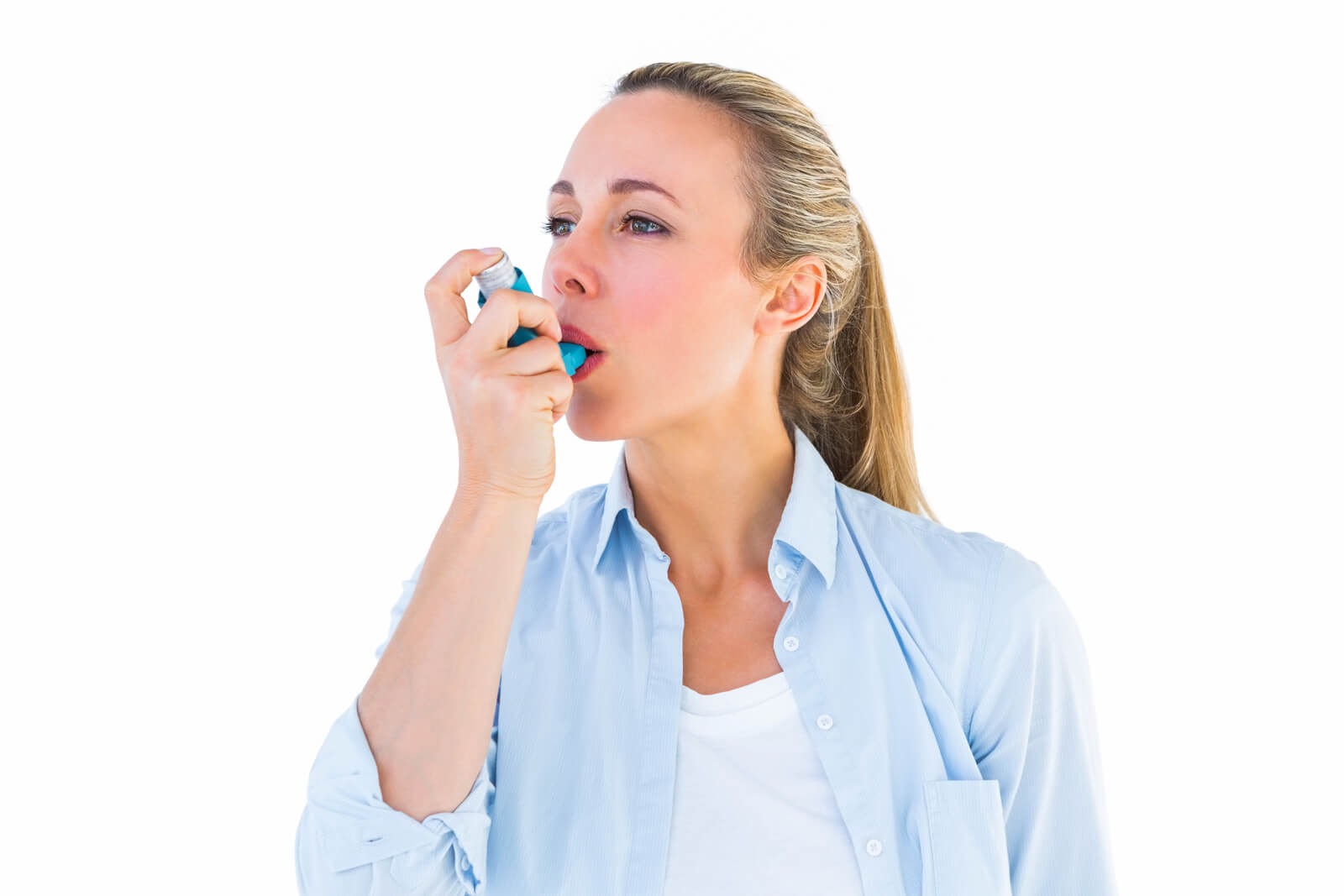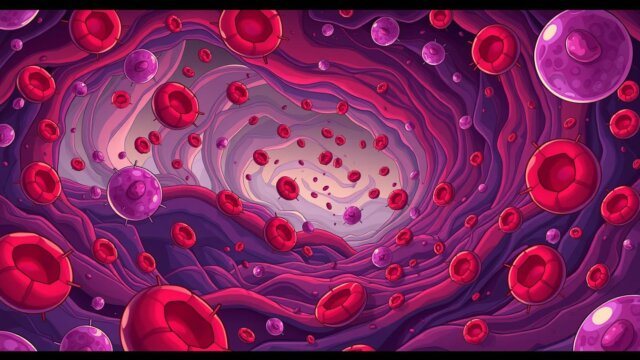FTC disclaimer: This post may contains affiliate links and we will be compensated if you click on a link and make a purchase.
Asthma is a chronic disease of the respiratory system characterized by symptoms such as wheezing, coughing, shortness of breath, and stiffening of the chest. Asthma types are asthma categories based on the factors causing asthma.
According to the Asthma and Allergy Foundation of America, there are many different types of asthma. These include allergic asthma, nocturnal asthma, occupational asthma, exercise-induced asthma, and more.
Allergic asthma is triggered by exposure to allergens, such as dust or pollen. Nocturnal asthma is worse at night and can make it difficult to sleep.
Occupational asthma is caused by exposure to irritants at work, such as chemicals or fumes.
Types of Asthma
In general, there are two types of asthma: extrinsic and intrinsic. This classification is based on the stimuli that lead to an asthma attack in patients.
Extrinsic asthma is known as allergic asthma. Intrinsic asthma is known as non-allergic asthma.
Asthma Types: Brief Explanation

The following paragraph provides an in-depth discussion of asthma types.
Extrinsic Asthma
Extrinsic asthma is caused by allergens present in our environment. An allergen is a foreign particle that enters our body.
Our immune system produces antibodies normally used to attack viruses and bacteria. Extrinsic asthma is also known as allergic asthma, thanks to the immune-system response to inhaled allergens such as pollen, dust mite, and animal dander.
It has been reported that people with the asthma type – extrinsic asthma also have other allergy-related problems such as skin rash, eczema, hives, and hay fever.
These patients respond quite well to inhaled steroids as they suppress the immune system, particularly in the lungs, where the excess production of antibodies causes inflammation of the airways.
Intrinsic Asthma
The other asthma type – intrinsic asthma, is not caused by allergens. It is caused by factors such as aspirin consumption, a chest infection, food preservatives, intense physical activity, extreme emotional disturbances, and smoking.
Antibodies are not produced in this case. The cause of an asthma attack is attributed to an irritation of the nerves or muscles of the airways in the lungs.
Treatment of intrinsic asthma is not easy if one does not know the exact cause of the asthma attack. Such asthma patients should take precautions such as avoiding strong perfumes, smoking, and certain foods that contain preservatives that trigger an asthma attack.
They should also not consume aspirin and other non-steroidal anti-inflammatory drugs. They should ask for a suitable alternative drug from their doctors to provide relief in case of fever or pain.
Mixed Asthma
The third type, mixed Asthma, is caused by a combination of factors causing extrinsic and intrinsic asthma.
Most asthma patients fall under this category as they react to external allergens and other non-allergic reactions causing asthma.
Asthma management requires the patient to identify the causes of an asthma attack.
Apart from these categories, there is another classification of asthma types. Asthma is classified as nocturnal and exercise-induced.
Nocturnal asthma is an asthma type in which the symptoms worsen in the middle of the night, particularly between 2-4 am.
Due to physical exhaustion, nocturnal asthma patients fall asleep quickly, but their sleep is disturbed by intense coughing episodes and breathing difficulties that they experience after three to four hours of sleep.
These patients feel exhausted during the day due to sleep disturbances caused by asthma attacks at night.
They need catnaps during the day to work at an adequate level of alertness. It is a serious condition as severe asthma attacks can occur early in the morning, leading to respiratory arrest and death.
The other Asthma type is bronchial asthma caused by caused in asthma patients shortly after vigorous and strenuous exercise.
Allergic Asthma Explained

Allergic Asthma is also known as extrinsic asthma. It is the most common type of asthma characterized by asthma symptoms triggered by an allergic reaction in the patient.
It affects about 50% of asthma patients. Around 2.5 million children suffer from allergic asthma.
It is caused by inhaled allergens such as pollen, dust mites, animal dander, mold, and fungi. Its symptoms are the same as those witnessed in a normal asthma attack, such as wheezing, coughing, and shortness of breath.
It is very important to find out whether the asthma is allergic or non-allergic for long-term asthma management.
The most important function of the immune system is to protect you from the attack of bacteria and viruses. However, in the case of people with allergies, the immune system is too vigilant.
When your body comes across an allergen, it stimulates the production of special cells called IgE antibodies. These defensive cells, when produced in excess, trigger an allergic reaction.
They cause the production of the chemical histamine, resulting in swelling and inflammation in the lungs. It creates common allergic symptoms such as itchy eyes, runny nose, and sneezing because your body is trying to destroy those allergens.
Common causes of Allergic Asthma
The common causes of allergic asthma include the following allergens: Windblown pollen from trees, grasses, and weeds; mold spores and mold fragments; animal dander from the fur, skin, saliva, and feathers; dust mite feces; and cockroach feces.
Diagnosis of Allergic Asthma
Allergic asthma can be severe and life-threatening as it leads to anaphylactic shock. The doctor asks an asthma patient to undergo certain blood tests to diagnose allergic asthma in the patient.
The two most recommended tests include
1) pricking your skin with a tiny amount of the allergen and measuring the size of the red bumps 20 minutes later, or
2) a blood test (RAST or allergen-specific IgE levels).
Controlling Allergic Asthma
One of the crucial factors in controlling allergic asthma includes avoiding asthma triggers. This includes adopting the following precautionary measures:
When pollen counts are high, allergic asthma patients should stay indoors. They should keep the windows closed.
If it is hot, they should use an air-conditioner having a clean filter. Pollen is the most common allergen causing asthma.
To avoid dust mites on bedsheets, pillows, and curtains, wrap them with allergen-proof covers. Wash them once a week with warm water.
Avoid stuffed animal toys at home as they also serve as the breeding ground for dust mites that act as asthma allergens.
Check the humidity levels at your home to control the proliferation of dust mites, cockroaches, and molds in your house. All these are common asthma triggers.
Avoid doing activities such as gardening and cleaning the lawn. This is because you become susceptible to pollen and dust, making you susceptible to an asthma attack.
Avoid keeping pets like cats and dogs as they produce animal dander that acts as a trigger to allergic asthma.
Asthma caused by allergens can be effectively controlled by adopting precautionary measures and minimizing one’s exposure to these allergens.
However, one cannot completely eliminate an asthma attack due to an allergic reaction. An allergist may also give you allergy shots(immunotherapy) to help you cope with allergic asthma.
Occupational Asthma Explained

Asthma is a chronic disease of the respiratory tract characterized by symptoms such as wheezing, coughing, shortness of breath, and stiffening of the chest.
What is Occupational Asthma and its Triggers?
Occupational asthma is a condition in which asthma is caused by the asthma triggers to which one is exposed at one’s workplace.
Workplaces such as construction sites, cement factories, fine chemical industries, bakeries, and mining sites have a high level of toxic particulate matter suspended in the air.
The workers in these places are constantly subjected to this polluted environment. Due to this, the airways in their lungs get irritated, swollen, and inflamed, causing airways constricting and an asthma attack.
Therefore, occupational asthma is an occupational hazard associated with these workers.
It has been reported that workers in factories manufacturing spray paints, varnishes, foam, and waterproofing agents have the highest number of patients with occupational asthma.
These factories continuously expose them to lung irritants such as toluene di-isocyanate and urethane. These harmful chemicals trigger an asthma attacks in patients.
Another workplace with many occupational asthma cases is the soldering industry, especially those concerned with electronics. They produce colophony fumes that give rise to asthma symptoms in their workers.
Moreover, bakers are susceptible to asthma in the bakery due to constant exposure to air-containing flour particles.
The suspended flour particles irritate the respiratory system and can trigger an asthma attack.
Assessment of health risk
When exposures to asthma triggers occur at the workplace, the assessment of health risk should be conducted as follows:
- Identify the tasks causing high exposure to asthma triggers
- Measure the mean and range of concentrations of asthma triggers to which one is exposed at the workplace
- Take additional samples at locations with lower exposure to asthma triggers.
- According to HSE’s guidelines, occupational asthma can be assessed as a health scare in workers based on the following factors.
- An assessment of the possible grave consequences resulting from high exposure to irritants and triggers of asthma
- In terms of intensities and patterns of exposure to asthma triggers, one should be able to estimate the extent of grave outcomes that could occur.
Therefore, under given circumstances, the authorities should adopt measures that would reduce the exposure of asthma triggers to a low level to prevent a high incidence of occupational asthma. Some of these measures include:
It has been reported that sensitization risk is associated with exposure level. In other words, the higher the concentration of the asthma trigger, the greater the possibility of the person experiencing asthma symptoms.
But, it is possible that if a person develops an allergy to a particular substance at the workplace, it can trigger asthma symptoms even in low concentration.
So, low concentration levels of the irritants reduce the risk of occupational asthma to some extent.
People in the chemical industries are continuously exposed to various chemicals. Some of them may cause inflammation of the airways in the lungs to trigger an asthma attack.
The incidence of occupational asthma in these industries is reduced as the workers wear protective masks and special aprons to protect themselves from continuous harmful exposure to chemicals.
Exercise-Induced Asthma Explained

Exercise-induced asthma is a condition in which asthma symptoms such as wheezing, cough, and shortness of breath occur in patients after vigorous exercise.
These patients are advised to refrain from adventurous and physically strenuous activities as it may lead to an asthma attack in patients.
It has been reported that exercise can induce an asthma attack in people who do not react to other asthma triggers. These people experience asthma attacks due to physical exertion while exercising.
What triggers Exercise-induced Asthma?
It is believed that people who suffer from exercise-induced asthma are more sensitive to changes in temperature and pressure.
When we exercise, we breathe through our mouths. As a result, cold air enters our mouths and hits the lungs. An asthma attack is triggered due to a contrast between the inhaled cold air and the warm air in the lungs.
It should be noted that sports and games that require a high level of physical activity and are played in cold weather increase the chances of exercise-induced asthma.
These include activities such as long-distance running, soccer, hockey (both field and ice), and skiing.
Exercise-induced Asthma Symptoms
The asthma symptoms usually exhibit 5 to 20 minutes after beginning the exercise. After stopping the exercise, the asthma symptoms diminish within 5 to 10 minutes.
The symptoms of exercise-induced asthma may cause panic in children. They may refuse to take part in games and other physical exercises if they suffer an asthma attack due to these activities.
If you or your kid has been diagnosed with exercise-induced asthma, an appropriate asthma action plan must be followed after consulting a suitable doctor.
This plan should include instructions to prevent asthma while exercising and manage an asthma attack if it occurs.
Prevention and managing Exercise-induced Asthma
According to the action plan for asthma, when an asthma attack occurs while exercising or playing outdoor games, one should immediately inhale two puffs of beta-2 agonist medication that acts as a rescuer inhaler.
If there is no relief, continue taking puffs of the rescuer puff every five minutes. If there is no relief after inhaling eight puffs in 40 minutes, one needs to contact the doctor immediately.
Your health care provider also needs to be called in case you take oral and inhaled steroids to control asthma, and your inhaler medicine does not last for more than 4 hours.
It should be noted that although asthma is reversible and can be controlled, severe asthma attacks have resulted in death.
Whenever one suffers intense shortness of breath that is not relieved using rescuer medicines, the person should be rushed to the hospital’s emergency ward.
Whenever one suffers an asthma attack, one should never drive alone and always be accompanied by a friend or relative while being taken to a hospital.
It should be noted that people suffering from exercise-induced asthma need to take the following precautions to avoid an asthma attack:
- They should avoid playing outdoor sports in cold weather.
- They must avoid physical exertion when suffering from cold, flu, and viral infections.
Before starting the exercises, they should spend adequate time doing warm-up exercises. Similarly, at the end of their exercise schedule, they should spend sufficient time doing the cooling down process.
Cough Variant Asthma Explained

The main symptom of cough variant asthma is a dry, unproductive cough. This cough does not extract any mucus from the respiratory system.
People suffering from this type of asthma do not have other asthma symptoms, such as wheezing and shortness of breath. This type of asthma is also a chronic cough lasting more than six to eight weeks.
The asthmatic cough may occur at night or during the day. If the cough occurs at night, it will cause sleep disturbances.
Triggers for Cough Variant Asthma
Cough variant asthma is said to have increased while exercising as physical stress causes excessive coughing.
When such asthma patients are exposed to allergens such as perfume, dust, and pollen, it can trigger the cough in people suffering from cough variant asthma.
Anybody can get cough variant asthma at any point in their life. But, it is more common in young kids having childhood asthma.
It may also lead to the development of classic asthma, associated with wheezing, shortness of breath, and coughing.
Causes of Cough Variant Asthma
No one knows the exact cause of this type. However, its causes can be attributed to external allergens such as fragrances from perfumes, pollen, dust mites, or exposure to cold air during thunderstorms.
One can develop cough variant asthma due to certain respiratory infections such as sinusitis.
Consumption of certain beta-blockers can cause cough variant asthma in some people. Beta-blockers are medicines that are prescribed for treating high blood pressure, heart disease, migraines, and palpitations.
They are also found in eye drops used to treat glaucoma and other problems. These eye drops induce asthma symptoms, including cough.
Aspirin sensitivity can also trigger cough in asthma patients. It is difficult to diagnose ‘cough variant asthma’ in people because the cough is the only symptom of this type of asthma.
Diagnosis of Cough Variant Asthma
Constant coughing can also be associated with bronchitis. Therefore, the doctor will first take the patient’s medical history in detail. He will listen to your breath.
But, people with ‘cough variant asthma’ have normal physical exams, chest X-rays, and spirometry.
Spirometry is a test in which a spirometer determines how quickly you exhale and empty your lungs after taking a deep breath.
If the spirometry test cannot detect asthma, you are subjected to a methacholine test. In this test, you are exposed to increasing methacholine before and after spirometry.
If the lung function falls below 20%, the methacholine test is considered positive, indicating asthma in the patient.
Cough Variant Asthma Treatment
Cough variant asthma is treated with the same medications used to treat normal asthma. The doctor may prescribe an asthma inhaler containing albuterol, ipratropium, or other anti-inflammatory agents.
The patient will gradually improve his or her condition after 6 to 8 weeks. People suffering from cough variant asthma have been reported to have more sensitive cough reflexes.
The doctor may also perform tests to determine eosinophils in the lungs. If the lungs are detected with eosinophils, the doctor may prescribe Zafirlukast.
It is a drug known to have relieved the cough in cough variant asthma patients who do not show a good response to inhaled steroids.
Medication Induced Asthma Explained

Medication-induced asthma refers to the inflammation and swelling of the airways in the lungs that is caused due to consumption of a particular medication.
Several medications can induce an asthma attack in patients. The symptoms associated with this type of asthma include wheezing, coughing, shortness of breath, rapid breathing, chest pain, chest pressure, and constricted airways.
What causes Medication Induced Asthma?
Medications in the ‘non-steroidal anti-inflammatory drugs (NSAID)’ category have been reported to cause asthma.
They are primarily used as painkillers or to relieve fever and headache. These medications include aspirin, ibuprofen, naproxen, and diclofenac.
Asthma attacks induced by aspirin and other NSAIDs are quite severe, and some can even be life-threatening.
Aspirin sensitivity is found to be greater in people suffering from severe asthma and in older patients.
A study conducted on Aspirin-induced Asthma
It was known earlier that these medications aggravate asthma symptoms, but no one knew the gravity of the situation till a recent research study was conducted.
This study that was conducted in 2004 suggested that 5% of children with asthma and 21% of adult asthma patients suffered from aspirin-induced asthma.
The findings of this study are important because the patients were subjected to aspirin in a controlled manner.
In this way, the researchers eliminated the possibility of attributing the asthma attack to the illness for which they were consuming aspirin.
When people were asked to report aspirin-induced asthma in earlier studies, the positive response was a mere 2.4%. Aspirin acts as a deregulator of leukotrienes. Leukotrienes cause inflammation and other asthma-related symptoms in the body.
Results of the study (Aspirin Induced Asthma)
It has been established that people who suffer from aspirin-induced asthma are likely to suffer from an asthma attack when they are prescribed NSAIDs.
Thus, this medication-induced asthma concludes that people who suffer from aspirin-induced asthma have a negative reaction to other prescribed NSAIDs.
Such patients were tested for the drug acetaminophen, which is considered an alternative to aspirin. It was found that only 7% of aspirin-induced asthma patients showed negative results for acetaminophen.
This included those patients who developed asthma on being subjected to very small doses of aspirin.
Medication-induced Asthma Treatments
People who suffer from medication-induced asthma on aspirin and NSAIDs have been prescribed another class of anti-inflammatory medications called cyclooxygenase-2(COX-2) inhibitors, including drugs such as celecoxib.
These medications have a narrower anti-inflammatory target and do not cause adverse effects in people suffering from aspirin-induced asthma.
But, they have serious side effects such as increased heart attack and stroke risk. Hence, a doctor must consider prescribing them as an alternative to NSAIDs.
People with medication-induced asthma caused by aspirin and other NSAIDs develop asthma symptoms 30 minutes to 2 hours after consumption.
The asthma treatment, in this case, is the same as that for classical asthma. The patient must use quick-relief inhalers; in extreme cases, they are given oxygen and oral steroids.
Leukotriene modifiers and steroid medications are considered for the long-term management of aspirin-induced asthma.
This is because this type of asthma is believed to have been caused by excessive production of leukotrienes in the body that causes inflammation of airways in the lungs. Leukotriene modifiers stop the action of these leukotrienes.
Nocturnal Asthma Explained

Nocturnal Asthma is a type of asthma in which the patient suffers from asthma symptoms at night. Therefore, their sleep is disturbed as they experience severe breathing difficulties, cough, and wheezing.
It is also very serious and causes lethal asthma attacks at night. It has been found that most deaths related to asthma are due to nocturnal asthma attacks.
It also causes fatigue, irritation, and daytime sleepiness in patients. This affects the overall quality of life in patients.
Causes of Nocturnal Asthma
The exact cause of nocturnal asthma is not known. But, it is believed that the following factors can cause nocturnal asthma in patients:
Increased mucus or sinusitis
While sleeping, the airways of the lungs become narrow, causing greater airflow resistance. This can trigger coughing at night, leading to greater tightening of the airways.
In addition, increased drainage from your sinus triggers asthma in very sensitive airways. It is quite common to have asthma with sinusitis.
Reclining position
Sleeping in a reclining position may make you susceptible to nocturnal asthma.
Various contributing factors include the accumulation of secretions in the airways due to drainage from sinuses, increased blood volume in the lungs leading to decreased lung volumes, and increased airway resistance.
Air conditioner
Sleeping in an air-conditioned bedroom leads to inhaling cold, moist air, which is believed to be one of the triggers of nocturnal asthma.
GERD
If you suffer from frequent heartburn, the reflux of the acid in the stomach may go up through the esophagus up to the larynx stimulating a reflex called a bronchial spasm.
This reflux worsens when you lie down. In addition, taking certain asthma medicines relax the valve between the stomach and the esophagus.
Sometimes, the stomach acid irritates the lower esophagus activating the vagus nerve. This causes bronchoconstriction as the bronchial tubes are irritated.
Furthermore, if the stomach acid moves through the esophagus and reaches the back of the throat, some acid trickles through the trachea, bronchi, and lungs, leading to further complications.
This includes irritation of airways, increased mucus production, and bronchoconstriction. Therefore, people suffering from GERD and asthma must take proper medications to prevent nocturnal asthma.
Late Phase Response
If you are exposed to external allergens in the evening, you may develop asthma symptoms at the time of exposure.
Further, asthma symptoms may get triggered at night, occurring 3-4 hours after exposure to allergens. This is known as late-phase response and is one of the causes of asthma.
Hormones
The hormone epinephrine is responsible for maintaining the relaxation and smoothening of the muscles of the airways.
It prevents the secretion of the chemical histamine responsible for the airways’ inflammation and the bronchial muscles’ constriction.
At 4:00 am in the morning, the epinephrine levels are the lowest while that of histamine are the highest. This is another reason for nocturnal asthma attacks.
How Is Nocturnal Asthma Treated?
Since nocturnal asthma occurs when the patient sleeps, it needs careful treatment and management.
Inhaled long-acting bronchodilators can prevent a nocturnal asthma attack. In addition, inhaling corticosteroids can be beneficial in preventing inflammation of the airways and asthma.
If you are suffering from GERD, ask your doctor to prescribe a medication that reduces the production of stomach acid.
Moreover, avoid external asthma triggers such as allergens that include animal dander, pollen, dust mites, and mold.
Conclusion
Many different types of asthma can be classified based on their triggers. An allergy triggers allergic asthma to a particular substance.
Nocturnal asthma is asthma that is worse at night. Occupational asthma is caused by exposure to certain substances in the workplace.
There are many other types of asthma, but these are the most common. If you think you may have asthma, talk to your doctor to get a diagnosis and treatment plan.








